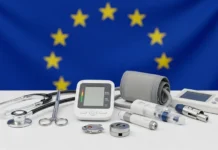Trust is everything in healthcare. Patients won’t follow advice if they don’t trust the people giving it. They won’t return to a hospital if they feel ignored. And one bad experience can reach thousands of people online in minutes.
So how can hospitals improve patient trust in 2025? This guide breaks it down into practical steps that work in the real world.
Why Trust Matters More Than Ever
Healthcare today moves fast. People want answers quickly. They read reviews. They compare services. They expect clear communication and basic respect. If they don’t get that, they leave.
A 2023 report from Press Ganey showed that 84% of patients say trust is a deciding factor in where they receive care. That number keeps going up every year.
One hospital administrator in Manchester shared, “We had excellent doctors, but our review score dropped because of poor bedside manner and long wait times. Once trust goes, everything else suffers.”
You can’t fix everything overnight, but there are clear ways to build trust and keep it strong.
Step 1: Improve Communication at Every Level
Clear and kind communication builds trust faster than any billboard or press release.
Train staff to speak with empathy. This includes doctors, nurses, and front desk staff. Everyone should know how to explain things in plain language.
Offer updates if patients are waiting. Tell them what’s happening. A five-minute check-in makes a huge difference.
Use signage that’s easy to understand. Avoid medical jargon when possible. Give clear discharge instructions.
One nurse in Leeds said, “I started using a whiteboard in each patient room to list their care team and schedule. Families loved it. It lowered complaints in our unit by half.”
Step 2: Actively Listen to Feedback
Most hospitals collect feedback. Few use it well.
Don’t just hand out a survey. Create real-time ways for patients to share concerns. Use follow-up calls or text check-ins after discharge.
Analyse patterns in the feedback. If three people complain about the same thing, fix it.
Let patients know when you’ve made changes. Put up a sign that says, “You asked, we listened.” Small gestures like this show you care.
Step 3: Train for Culture, Not Just Skills
Technical training is important. But soft skills matter just as much.
Offer regular workshops on empathy, cultural sensitivity, and non-verbal communication. Include role-playing sessions. Make it fun but realistic.
Reward staff who demonstrate great service. Celebrate those wins.
One facility manager in Bristol said, “We give monthly awards to team members based on patient shoutouts. It changed the mood across our whole department.”
Step 4: Create a Safer, More Comfortable Space
Patients trust hospitals that feel clean, calm, and safe.
Keep waiting areas tidy. Add quiet zones. Offer free water and phone charging points. Use natural light when possible. Even small design changes help.
Security also matters. Make sure patients feel safe entering and leaving your facility. That includes lighting in car parks and visible staff presence.
Post clear signs about who to contact for help. Make those staff available and easy to recognise.
Step 5: Build a Strong Online Presence
Most patients look up hospitals before they ever walk in the door. Your website and reviews shape their opinion fast.
Make sure your website is updated, easy to navigate, and mobile-friendly. Show real photos of your facility and staff. List services clearly. Make contact info easy to find.
Respond to online reviews. Thank happy patients. Address concerns politely. Never argue. Show you’re listening.
If your hospital has been hit by false claims or unfair ratings, you can work with online reputation management companies. These firms help clean up search results, fix inaccurate listings, and monitor for new reviews or mentions. In the same way you clean a patient room, you need to keep your online space clean too.
Step 6: Let Patients Be Part of the Process
Give patients more control. Let them book appointments online. Let them view records. Let them choose follow-up times.
Ask for their preferences. Ask about their goals. Work together on care plans instead of giving orders.
One doctor in Birmingham said, “We started using shared decision tools for treatment options. Patients feel heard and are more likely to follow through. It also lowered re-admissions.”
Respect builds trust. Involve patients in their care, and they’ll respect you back.
Step 7: Build Community Outside the Hospital Walls
Trust grows through relationships, not just procedures.
Host health fairs. Offer free screenings. Partner with local schools or businesses. Show up in the community even when people aren’t sick.
Use social media to share stories, staff spotlights, and helpful tips. Keep it simple and friendly.
One hospital in Newcastle created a Facebook group for maternity patients. It became a space for sharing stories, asking questions, and celebrating births. Trust shot up.
Step 8: Handle Mistakes with Transparency
Mistakes happen. What you do next makes all the difference.
If something goes wrong, apologise. Explain what happened. Outline what you’re doing to fix it.
Avoid blame. Take ownership. Patients respect honesty.
The NHS published a study in 2022 that found transparency after an error increases patient trust by 36%, even when the outcome is serious.
Train your staff on how to disclose errors. Make it part of your process.
Step 9: Support Your Staff
Stressed staff can’t give great care. Take care of your team so they can take care of patients.
Offer wellness support. Encourage breaks. Listen to staff concerns.
Use anonymous surveys to find pain points. Act on what you learn.
One ward manager in Liverpool said, “We let staff suggest one policy change per month. If it helps patients or staff, we try it. It gave people a voice and boosted morale.”
Happy staff make patients feel safe.
Final Thoughts
Hospitals don’t need fancy slogans to earn trust. They need consistency. Clean spaces. Clear words. Kind actions.
Start small. Listen more. Fix what’s broken. Show up for your patients before they need to ask.
“Trust in healthcare isn’t built during surgery,” says Dr. Andrej Grajn, a London-based organ procurement surgeon. “It’s built in the quiet moments before and after — in how we speak, how we listen, and how we own our mistakes. That’s what patients remember.”
Trust isn’t built by accident. It’s built every day. In every room. By every person.
And when it’s strong, patients feel it. They come back. They tell others. They trust your care, because they trust your people.


















